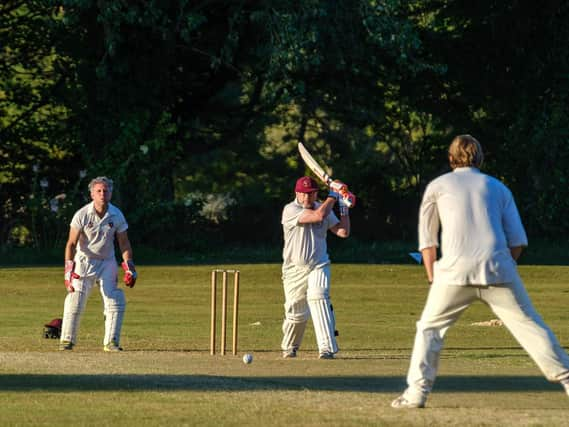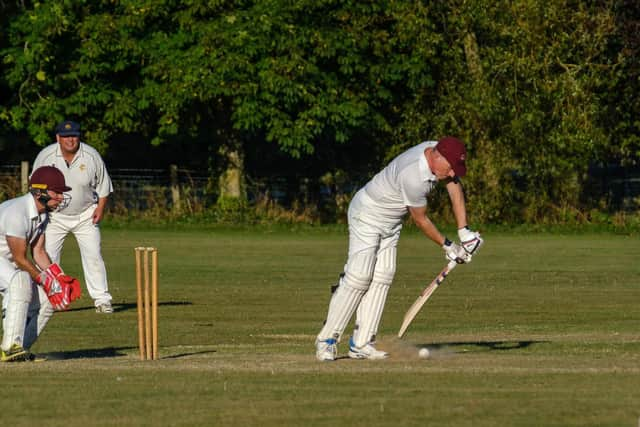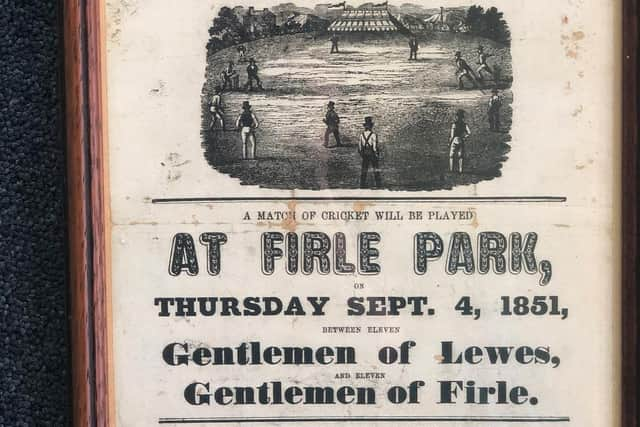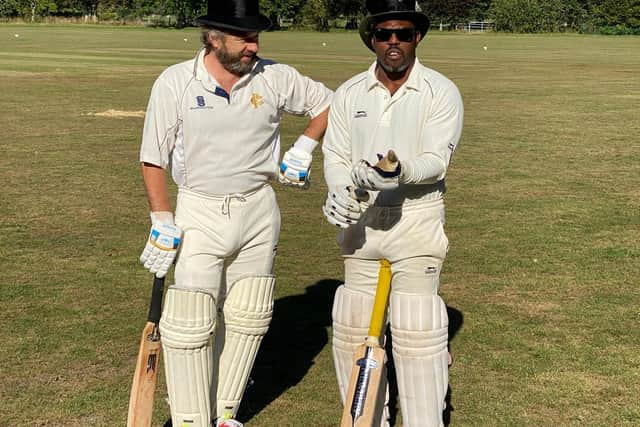Top hats and tail-enders: Sussex's anicent cricket match comes up to date


For much of the 2020 cricket season, it seemed like there might be no recreational cricket at all, as the coronavirus pandemic extended its killjoy tentacles to sport of all levels – and of necessity. The Gentlemen of Lewes – a team to which the first literary reference is made in 1753 – had the first 13 games of their carefully-planned season cancelled, including a three-match tour of Portugal in early June.
But as the curve of infection was flattened through May and June, so more liberties previously taken for granted were gradually restored. Thanks to some smart contingency planning by the England & Wales Cricket Board (ECB) to make even the recreational version of the sport COVID-secure – combined with the fastest U-turn in Prime Minister Johnson’s short tenure – on 3 July Chief Medical Officer Chris Whitty confirmed cricketers could play together again in 2020. Terms and conditions applied, of course, from sanitising hands and balls to no hugging (just elbow bumping) and only even-numbered slips allowed.
Advertisement
Hide AdAdvertisement
Hide AdAnd, remarkably, the long-arranged 2020 game between Firle CC and the Gentlemen of Lewes, set last November for 22 July, did indeed take place as scheduled. And the plans involved this centuries-old contest taking place in the newest format of the game, the ECB’s The Hundred. “Well why not?” thought the skippers when there was still frost on the ground. “Why not mix up the old with the new and see what happens?”


So it was that both teams gathered in the picture-book setting of Firle CC, wedged between the Ram Inn and Firle Place. After winning the toss and electing the field, Gentlemen of Lewes skipper Hall gave an interview to local radio, stalking around the outfield on his mobile, talking up both teams’ Corinthian spirit and our desire to play the new format on a short, later summer’s evening … perhaps so the players could get to the Ram garden all the quicker.
Until 2020, the shortest form of the game was Twenty 20 – 20, six-ball overs per side. But The Hundred is even quicker: ten, ten-ball overs, with each over bowled by one or two bowlers. There was some talk of a powerplay, but that seemed like a new rule too far. Most players were too uncertain as to how to play this new format – to attack from the off; to build and then attack? Who knew what a par or challenging score might be? 90, 100, 110?
The Gentlemen of Lewes invited the Gentlemen of Firle to bat, and Firle’s two openers, Samuel and Yearsley looked splendid in their Victorian top hats.
Advertisement
Hide AdAdvertisement
Hide AdThey looked in hungry form, too, with Samuel bludgeoning a six off the very first ball. After helping himself to three more boundaries, he eventually holed out to a steepling catch at long on to the redoubtable hands of Lewes’ “Snooker Player” Higgins off the bowling of Powell. Higgins then had Yearsley – top scorer with 27 – caught smartly behind by Hall, who also stumped Firle’s third batter, Suckling, off Lewes’ wily spinner Knowles, tempted to waft extravagantly outside off stump.


The nine bowlers of the Gentlemen of Lewes turned the screw in the middle overs, claustrophobically restricting their hosts to 72 from the first 80 balls, with Ingham and Nicholls particularly parsimonious. In the field, Lewes also looked sharp, with substitute fielder – Nicholls’ daughter Bluebell, a fine rugby player with Saracens – the fastest across the turf and with the finest throw on show. But as so often in sport – and particularly this very friendly brand of Corinthian cricket – the pendulum swung the other way, and some smart work by Firle skipper Treloar and Christie saw both score mid-teens and haul Firle to 109-5 at the change-over. They were helped along the way by some over-generous fielding and a handful of spilt catches.
The challenge of playing T-20 cricket after work even at the height of summer is that light can get difficult halfway through the second innings. But in The Hundred, even in the embers of the Gentlemen of Lewes’ response, the shadows from the trees were still some way from the square. Rather like the Gents’ score, as it turned out; some way short of its required destination.
Lewes started and continued in a bit too much of a hurry, looking to get on with things too fast and too many batters throwing away their wickets too cheaply, playing across the line. Hero of the ball and that spectacular catch, Higgins, was the first to go, followed by Robinson and Hilton. Then came the best partnership of the game for the visitors, with skipper Hall (17) and Nicholls (top scoring with 21) keeping Lewes up with the run rate by halfway through the innings – 54-4 off five, ten-ball overs. But Hall and Nicholls were the only Gentlemen of Lewes to reach double figures, and as the shadows lengthened, they started to run out of ideas and wickets.
Advertisement
Hide AdAdvertisement
Hide AdIn the end, Lewes lost their last five wickets for 13 runs, and were all out for 79. Cartwright skittled four for Firle, with five other bowlers taking one each.


The eighth Lewes wicket was the result of a comedy run-out between Knowles and Dam, when Knowles yelled “Yes! No! Wait! Yes!” and inevitably found himself stranded in no man’s land. Dam, meanwhile, resolutely and calmly held his ground, admiring his gloves, the snazziest and jazziest in Sussex.
Cricket post-COVID has necessarily more muted celebrations than pre-pandemic. Players’ hands and the ball are routinely sanitized. But what this most ancient of fixtures in the most modern of formats showed was that, despite this crazy year, recreational cricket can be played with the same, warm spirit of friendly competition as it was in Victorian times. Fielding in The Hundred is the very definition of social distancing, with players dotted round the field and on the boundary edge. And while the teams may not have repaired to the Ram for a sit-down luncheon as the poster in the Firle clubhouse said they did in 1851, the beer garden was open and it’s said that some players from both teams did indeed patronise the hostelry.
Some traditions in Sussex wunt be druv.